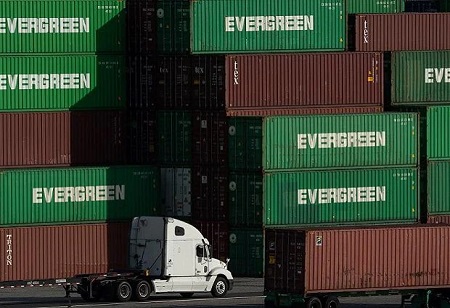India is gaining share in manufacturing exports and share of global merchandise exports, the Gains in commodities may not last, but momentum should remain constant in electronics (large market size, opportunities for share gains, policy support) and specialty chemicals (a decade of steady growth has brought scale to firms).
In textiles, exports are growing and the opportunity in autos is as much local (strong demand growth gives scale), as potential share gains as global industry disrupts (new OEMs, business models and supply chains).
India's manufacturing share of GDP has been declining steadily since 2012, partly due to a stagnation in exports of manufactured goods.
Electronics hold promises not only on the large size (30 per cent of global goods exports), but also opportunities for share gains, given geopolitical shifts and China's shrinking industrial labour force.
In chemicals, while India lacks sustainable advantage in bulks, its share of global exports of specialty chemicals has risen steadily (these are now 10 per cent plus of India's exports) and the industry has now gained critical mass.
India has seen gains in electronics, chemicals, autos, apparel, the report said.
India runs a structural less in sectors dependent on resource availability, like oil, gas, coal and gold (together around a fifth of global exports); the share in agriculture is higher than average given structural advantages, but its share of manufactured goods exports is lower.
Within manufactured goods, pre-Covid-19 Indias' share was above average in jewellery (though it has low value-add) and textiles, and below average in electronics.
Since 2015, metals have grown the fastest byt may not sustain.
Growth in electronics and machinery has been well above average though chemicals and textiles.
While electrical and equipment together account for $600 bn of global exports annually, India's opportunity would be primarily in labour-intensive segments primarily.
So as to expand these share gains and to consolidate them, evidence of Indian groups investing in the value chain (like Tata Electronics, which has already invested $1 bn in its Hosur facility and plans to hire 40,000 workers), as well as foreign technology companies setting up operations in India is to be seen.
Elsewhere, in consumer electronics like air-conditioners, import substitution has driven significant growth in manufacturing.
Textile and apparel exports from India have picked up over the past year because when lockdowns hurt demand for new clothes, global apparel markets have rebounded.
This could just be a time lag in demand flowing through a value-chain, and preliminary data for Dec-2021 shows a meaningful pick-up in apparel exports.
It is unlikely that China will cede its entire market share in apparel (ready-made garments, or RMG), but the trends of the past decade are likely to persist. Also nearly all of China's share in cotton apparel was taken by Bangladesh and Cambodia and that in man-made fibres by Vietnam, current industry feedback suggests that volumes are also beginning to shift to India.
